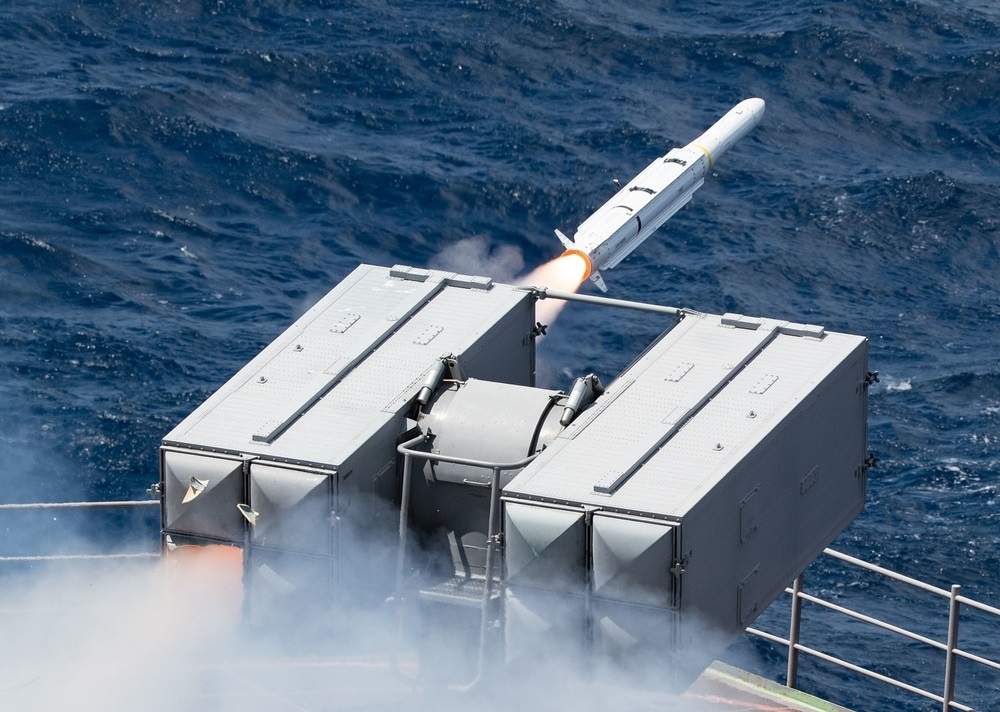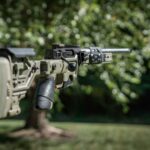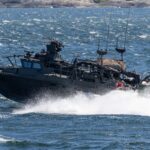Raytheon, an RTX business, has clinched a $250 million direct-commercial-sale contract with Mitsubishi Electric Corporation. The agreement sets the stage for licensed production of the Evolved Sea Sparrow Missile Block 2 (ESSM B2) at MELCO’s Komaki-North complex. According to industry sources, the package is the largest single ESSM commitment Tokyo has placed since joining the NATO Seasparrow program.
Defense officials confirm the scope covers complete missile kits, replacement parts, test hardware, and sustained engineering help. Raytheon will ship the core assemblies from its Tucson line; MELCO technicians will perform final mating, acceptance testing, and depot-level quality checks inside Japan. The structure mirrors past Japanese co-production deals but extends deeper into software sustainment and radar-seeker tuning.
Barbara Borgonovi, president of Raytheon Naval Power, calls the arrangement “the culmination of decades of trust.” She notes that MELCO’s added role brings fresh capacity to the wider ESSM supply chain at a time when regional demand is climbing fast.
The contract breaks down into four headline deliverables:
- Missile hardware kits covering motor, warhead, fins, and all flight electronics.
- Guidance-section spares with line-replaceable seeker modules for life-of-type upkeep.
- System integration data packages so Japanese yards can plug the missile into Aegis and local combat-direction suites without U.S. depot visits.
- On-site technical assistance from Raytheon field teams through first-article acceptance in 2029.
Advanced ESSM Block 2 Missile Features Enhance Japanese Destroyer Defense
Our analysis shows the Block 2 variant gives Japan’s destroyers a sharper close-in shield:
- Active X-band seeker that guides itself in the last seconds of flight, so the ship’s illuminators stay free for other threats.
- Dual-mode homing that blends semi-active and active radar to cut through clutter.
- High-g tail control and improved strakes for quick course-correction at Mach 4-plus.
- Open-architecture flight computer that receives mid-course updates over existing data links.
Japan Maritime Self-Defense Force planners intend to back-fit ESSM B2 onto Maya- and Atago-class destroyers alongside Standard Missile upgrades. Combat system trials will start after the first locally finished rounds roll off the line in late 2027. Navy program managers value the dual-source build because it keeps fleet magazines topped up even when U.S. production slots tighten. This mirrors approaches seen in Singapore’s recently completed island-wide air defence shield, where local capacity plays a key role in readiness.
Industrial Impact: MELCO Strengthens Japan’s Missile Manufacturing Ecosystem
From an industrial angle, MELCO gains fresh work for its precision-fabrication wing and leverages electronics strengths honed on Japan’s AAM-4B air-to-air missile. Executives point to three concrete benefits: lower import risk, deeper workforce retention, and a path to export support contracts with other ESSM consortium members once Japanese assembly volumes stabilize.
The NATO Seasparrow consortium now spans twelve member states, yet participation levels differ. Japan remains an observer rather than a full voting member,but the new license for ESSM Block 2 production nudges Tokyo closer to the core group that steers capability upgrades. Our editorial team expects the move to secure Japan a larger voice when post-Block 2 enhancements reach the design board early in the 2030s.
Raytheon’s Growing ESSM Backlog Underpinned by Japan Contract
For Raytheon, the award feeds a missile backlog already strengthened by recent U.S. Navy and European orders. Company filings show ESSM revenue has risen nearly 18 percent year-on-year. Managers cite MELCO’s order as proof the firm can keep global deliveries high while also meeting Pentagon volume.
Schedules agreed by the parties map four distinct phases. Component shipments begin in the first quarter of 2026. Local mating and system certification run through 2028. Raytheon will then taper onsite manpower as MELCO proves repeatable throughput. Final contractual acceptance must occur no later than December 2029, with an option for a follow-on lot already drafted.
Japan is not alone in boosting ESSM stocks. In May 2025 Denmark brought forward 880 million-krone in new funding to accelerate Block 2 buys for its Iver Huitfeldt frigates, citing the need to counter faster, low-altitude threats in the Baltic. That action underscores growing European faith in the missile’s dual-mode seeker. Similarly, Sweden’s recent deal under the European Sky Shield Initiative highlights a continental push to enhance integrated air defence.
A wider modernization trend helps explain the timing. Across the Indo-Pacific, navies are upgrading point-defense layers to address supersonic cruise-missile proliferation and the rise of small, low-observable drones. ESSM B2 fits a niche between lightweight close-in weapons and larger Standard Missile interceptors, offering quick reaction without adding heavy radar burden.
Raytheon and MELCO Explore Future Co-development in Missile Guidance Software
Looking ahead, both companies hint at deeper collaboration. Future work could explore joint software labs in Japan so engineers can patch guidance code faster as threat libraries evolve. Neither side reveals cost-sharing metrics, yet officials insist that Japan’s defense-industrial base stands to save money by inserting its own secure-communications modules during final assembly rather than importing them finished.
The contract also aligns with Washington’s push for allied co-production to ease pressure on U.S. lines. Congressional language in the FY 2025 National Defense Authorization Act urges the Pentagon to encourage licensed builds of select munitions when such moves grow total allied capacity. Defense-Aerospace editorial analysis shows the Raytheon-MELCO deal could serve as a model for other partners eyeing similar off-shore arrangements.
In summary, the $250 million pact delivers tangible gains for both sides: Japan gets a stronger naval shield built largely at home, and Raytheon secures fresh throughput without expanding U.S. facilities. As regional missile inventories swell, the coming four years will show whether this partnership can keep pace with demand and pave the way for even deeper technology sharing.
REFERENCE SOURCES
- https://www.rtx.com/news/news-center/2025/06/24/rtxs-raytheon-awarded-250-million-contract-from-melco-for-essm-block-2-licensed
- https://www.defence-blog.com/raytheon-to-supply-missile-kits-for-japanese-essm-production/
- https://seapowermagazine.org/rtxs-raytheon-awarded-250-million-contract-from-melco-for-essm-block-2-licensed-production/
- https://defence-industry.eu/raytheon-secures-250-million-contract-with-japan-for-essm-block-2-missile-production/
- https://www.navaltoday.com/2025/06/25/raytheon-scores-250-million-contract-with-japans-melco-for-essm-block-2-production/
- https://www.asdnews.com/news/defense/2025/06/24/raytheon-awarded-250m-contract-melco-essm-block-2-licensed-production
- https://finance.yahoo.com/news/rtxs-raytheon-awarded-250-million-120000100.html
- https://www.navalnews.com/naval-news/2019/08/low-rate-initial-production-begins-for-raytheon-essm-block-2/
- https://en.wikipedia.org/wiki/RIM-162_ESSM
- https://www.navaltoday.com/2025/05/21/denmark-allocates-funds-to-purchase-additional-essms-for-navys-frigates/
- https://www.navalnews.com/naval-news/2025/06/raytheon-wins-contract-for-the-local-production-of-essm-block-2-in-japan/


